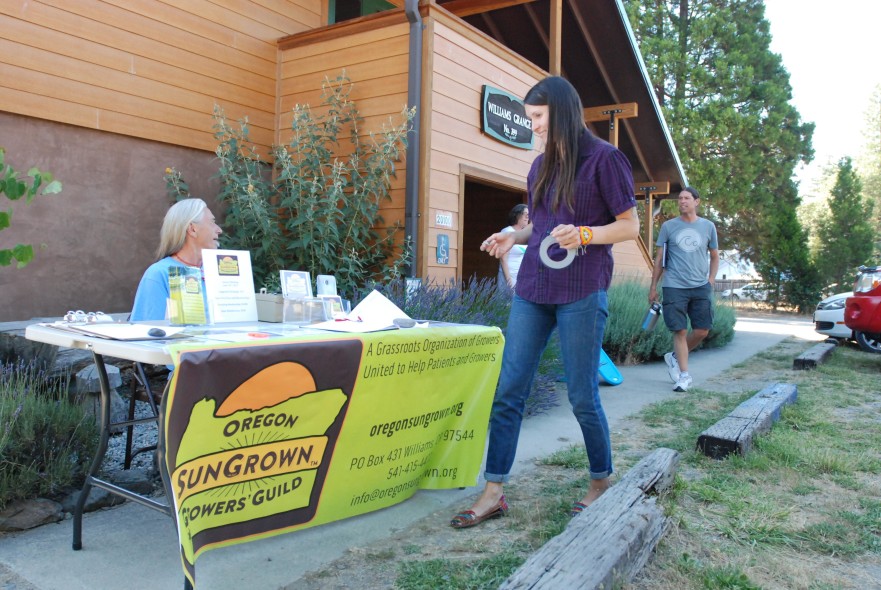The New York Times-
Oregon Growers Look Forward to New Era of Retail Marijuana
WILLIAMS, Ore. — On the 4th Thursday of each month, veteran medical marijuana growers and hopeful newbies gather in the old Williams Grange hall in a small rural Oregon valley long known for growing some of the best cannabis on the planet.
Since voters last fall made the state the fourth to legalize recreational marijuana, people have been flocking to the hall to get the latest update on lawmakers’ progress on crafting rules for the new industry.
The entrepreneurs also share tips on how to produce happy and healthy marijuana plants.
“Why not come to the source to learn about growing?” says Gina Erdmann, director of the Oregon SunGrown Growers’ Guild, as she lays out materials on the sign-in table outside the hall, now a community center.
While the pot law will go into effect Wednesday, it may pass without much fanfare in the state, which was the first to decriminalize small amounts of marijuana in 1973. Smoking it in public is illegal, but Portland police are discouraging residents from calling 911 to report smokers.
Adults will be allowed to possess and grow limited amounts of marijuana, but not to buy or sell it yet. It will be a few months to more than a year before it is legal to sell, and then only with a state permit.
In the old Williams Grange, expectations of pot prosperity drew about 75 people to the most recent growers’ guild meeting, filling the hall. Many dropped $10 into a donation box.
Attorney Paul Loney told the gathering that if the Legislature authorizes medical marijuana growers to sell to dispensaries for retail sales starting Oct. 1, growers need to be sure they get a transfer form signed by the patient they grow for.
“There will be cops trolling Craigslist looking to set up people,” Loney warned.
The Williams Valley was settled in the 1850s gold rush, and has seen eras of homesteading, timbering and dairy farming. Farms today grow herbs, vegetables, wine grapes, hay and cattle. The valley is home to about 2,000 people.
An analysis by The Associated Press in 2011 found that about 20 percent of residents held medical marijuana cards, the highest concentration of any zip code in Oregon.
The climate is ideal for growing cannabis, with long warm summers with little or no rain. The region is remote and rural, which attracted hippies looking for a little land in the 1970s who grew marijuana in secret gardens in the nearby hills.
After medical marijuana became legal in 1999, people brought their gardens home.
For years, medical marijuana laws did not allow growers to be paid for their labor. But the limits on plants and the amount a patient could possess left large surpluses, which some sold illegally. Police logs noted people from other states arrested with large amounts of pot in their trunks.
Just what the regulated retail cannabis industry in Oregon will look like continues to be a moving target. A bill would allow medical marijuana dispensaries to start selling small amounts to retail customers starting Oct. 1, with supplies coming from medical growers.
Advertisement
Continue reading the main story
Advertisement
Continue reading the main story
The Oregon Liquor Control Commission, which will oversee retail sales and production, plans to start taking applications from growers in January, so permits can be awarded in time for spring planting.
Permits for processors, wholesalers and retailers would roll out in succession, allowing retail sales to start late in 2016.
“It’s really a hostile business environment. But things are improving,” said Cedar Grey, the growers’ guild president and a local homebuilder who along with his wife grow medical marijuana on a clearing in the pine and fir woods.
In Washington state, where recreational marijuana has been legal for two years, cashing in has proved more difficult than many expected, said Seattle attorney Christine Masse, who works with marijuana businesses and regulators.
“Some people thought this would be the next gold rush,” she said. “On the whole, that has not been the case up here.”
They face major economic obstacles, she said. Because marijuana is still prohibited federally, growers can’t get bank loans, deposit their money, or claim tax deductions.
Seth Crawford, who teaches marijuana policy at Oregon State University, does not expect any surge in demand, which has been served comfortably by the black market for some 40 years, and medical marijuana since 1999.
Unless they can find some niche market, he expects many small growers, who typically sold about $7,500 worth of cannabis a year in 2012, to be eaten up by bigger organizations with more capital.
“We are moving from an era of small, backyard producers … to a small number of enormous production farms,” he wrote in an email. “There will be a lot of ‘newcomers,’ ranging from inexperienced to expert. Almost all of them will fail.”
Despite the obstacles, the Legislature is trying to encourage the industry, both to strangle the black market and to help the state’s economy.
State Rep. Carl Wilson, R-Grants Pass, campaigned against legalization last fall, but since serving on a legislative committee creating the laws to regulate it, has been converted to the idea that cannabis can be an effective medicinal.
He hopes a legal cannabis industry will help rural Oregon, which has struggled to find a replacement for the defunct timber industry.
“It is a legitimate product now,” he said. “It is my interest to see it prosper, along with the medicinal.”

